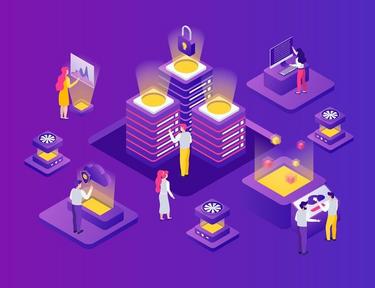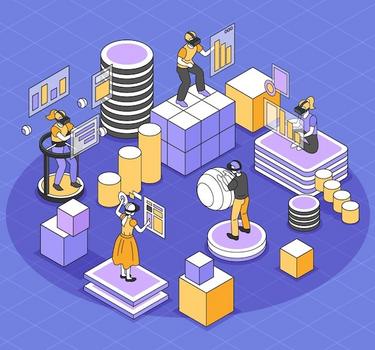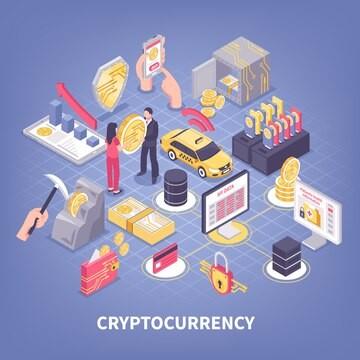Asset tokenization
Asset tokenization[1] represents the process of converting rights to an asset into a digital token[2] on a blockchain[3]. This innovative approach to ownership and investment democratizes access to various asset classes, including real estate, art, precious metals, and more, by breaking down barriers to entry and improving liquidity[4].
- The Concept of Asset Tokenization
- Key Facts
- Asset tokenization
- Introduction to Asset Tokenization
- Benefits of Tokenization
- How Tokenization Works
- Tokenization of Different Asset Classes
- Challenges and Regulatory Considerations
- The Future of Asset Tokenization
- Case Studies and Real-World Applications
The Concept of Asset Tokenization
1. Definition: Asset tokenization involves creating a digital representation[5] of a physical or non-physical asset on a blockchain. Each token reflects a portion of the underlying asset, allowing for fractional ownership[6] and investment.
2. Advantages: Tokenization offers multiple benefits, including increased liquidity of assets, lower transaction costs, greater transparency[7], and enhanced security through blockchain technology. It also opens up investment opportunities to a wider audience by lowering the minimum investment threshold.
3. Assets Suitable for Tokenization: Practically any asset can be tokenized, from real estate and art to commodities and intellectual property. This flexibility allows for a broad range of investment opportunities and innovative financial products.
4. Regulatory Framework[8]: The legal and regulatory landscape[9] for tokenized assets is complex and varies by jurisdiction. Compliance[10] with securities laws[11], anti-money laundering (AML) regulations, and know your customer (KYC) requirements is essential for the legitimacy and stability of tokenized asset offerings.
5. Future Prospects: The future of asset tokenization is promising, with potential for significant impact on global finance and investment. As technology and regulations evolve, tokenization could become a standard method for asset management and investment, offering unparalleled efficiency and accessibility.
Key Facts
- Asset tokenization converts rights to an asset into a digital token, enhancing liquidity and accessibility.
- Tokenization applies to various assets, including real estate, art, and commodities, enabling fractional ownership.
- Benefits of asset tokenization include lower transaction costs, increased liquidity, and broader investor access.
- The regulatory landscape for tokenized assets requires careful navigation to ensure compliance and investor protection.
- The future of asset tokenization is seen as a transformative force in global finance, with growing adoption and innovation.
Asset tokenization
Asset tokenization represents a groundbreaking shift in how we perceive and handle ownership, trading, and investment in various assets, ranging from real estate and art to stocks and commodities. By leveraging blockchain technology, tokenization divides tangible and intangible assets into digital tokens, each representing a share or ownership stake in the underlying asset. This approach not only democratizes access to investment opportunities but also enhances liquidity, transparency, and efficiency in markets traditionally characterized by high entry barriers and opaque transactions.
Introduction to Asset Tokenization
Asset tokenization is the process of converting rights to an asset into a digital token on a blockchain. This innovative approach offers a bridge between the physical and digital worlds, facilitating a more efficient, secure, and inclusive market for various assets.
Benefits of Tokenization
Tokenization brings several key advantages, including increased liquidity for traditionally illiquid assets, fractional ownership, lower transaction costs, enhanced transparency, and faster settlements. These benefits collectively contribute to a more accessible and efficient market.
How Tokenization Works
The process involves creating digital tokens that represent ownership or a stake in an underlying asset. These tokens are then issued on a blockchain, where they can be bought, sold, or traded. Smart contracts[12] automate and secure transactions, ensuring compliance and reducing the need for intermediaries.
Tokenization of Different Asset Classes
Virtually any asset can be tokenized, from real estate and art to commodities and intellectual property. Each asset class benefits differently from tokenization, opening new opportunities for investment and ownership.
Challenges and Regulatory Considerations
Despite its potential, asset tokenization faces challenges, including regulatory hurdles, the need for standardization, and concerns about market adoption and technology maturity. Regulatory frameworks vary by jurisdiction, impacting how tokens are issued, traded, and held.
The Future of Asset Tokenization
The future of asset tokenization is promising, with ongoing advancements in blockchain technology and regulatory environments adapting to accommodate these digital assets. As the ecosystem matures, tokenization is expected to become a significant force in the global economy, transforming how we invest in and manage assets.
Case Studies and Real-World Applications
Exploring successful tokenization projects across different asset classes provides insights into the practical application and impact of this technology. From tokenized real estate platforms to art and collectibles, these case studies illustrate the diverse potential of asset tokenization.
In conclusion, asset tokenization stands at the forefront of financial innovation, offering a transformative approach to asset management and investment. By addressing traditional market inefficiencies and opening new avenues for participation, tokenization has the potential to reshape the landscape of investment and ownership in the digital age.
- Tokenization — The process of issuing a blockchain token that digitally represents a real tradable asset.
- Token — A unit of value issued by a project, representing various assets or utilities on a blockchain.
- Blockchain — A decentralized digital ledger recording cryptocurrency transactions across multiple computers.
- Liquidity — The ease with which a cryptocurrency can be bought or sold in the market without affecting its price.
- Digital Representation — A digital version of a physical or non-physical asset, recorded on a blockchain, that represents ownership or rights.
- Fractional Ownership — A method of asset ownership where multiple parties can own a portion of the asset, enhancing liquidity and accessibility.
- Transparency — The characteristic of blockchain technology that allows all transactions to be visible and verifiable by all network participants.
- Regulatory Framework — A set of regulations and guidelines established by authorities that govern the operation of financial markets and instruments.
- Regulatory Landscape — The set of laws, guidelines, and policies that govern the use of virtual assets across different regions.
- Compliance — The act of adhering to legal standards and regulations established by governmental bodies and regulatory agencies, particularly in the context of financial operations and transactions involving cryptocurrencies.
- Securities Laws — Laws regulating the offer and sale of securities to protect investors against fraud, requiring transparency and disclosure.
- Smart Contracts — Self-executing contracts with terms directly written into code, facilitating, verifying, or enforcing a contract on the blockchain.



